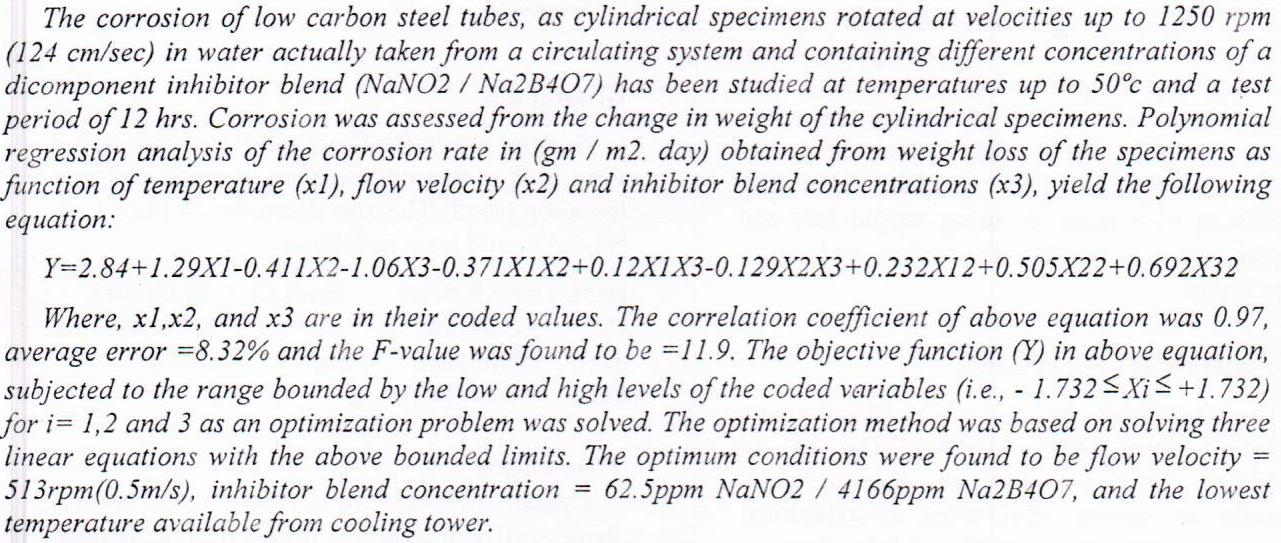
The purpose of this paper is to build a simulation model by using HEC-RAS software to simulate the reality of water movement in the main river of Basra City (South of Iraq) which is known as Siraji-Khoura River. The main objective of the simulation is to detect areas where the water cycle is interrupted in some stations of the river stream, as this river has become an outlet for the disposal of sewage, leading to pollution and causing weakness in some sections of the river & obstructing the water cycle that takes place between this river and Shatt al – Arab river. A field survey data of the river and its banks were adopted to derive the grades, longitudinal and cross sections of the river, these data included three-dimensional coordinates
... Show More (6)
(6)
 (1)
(1)
Leap Motion Controller (LMC) is a gesture sensor consists of three infrared light emitters and two infrared stereo cameras as tracking sensors. LMC translates hand movements into graphical data that are used in a variety of applications such as virtual/augmented reality and object movements control. In this work, we intend to control the movements of a prosthetic hand via (LMC) in which fingers are flexed or extended in response to hand movements. This will be carried out by passing in the data from the Leap Motion to a processing unit that processes the raw data by an open-source package (Processing i3) in order to control five servo motors using a micro-controller board. In addition, haptic setup is proposed using force sensors (F
... Show More (3)
(3)
 (3)
(3)
Motivated by the vital role played by transition metal nitride (TMN) composites in various industrial applications, the current study reports electronic properties, thermodynamic stability phase diagram, and vacancy formation energies of the plausible surfaces of NiAs and WC-type structures of δ3-MoN and δ-WN hexagonal phases, respectively. Low miller indices of various surface terminations of δ3-MoN and δ-WN namely, (100), (110), (111), and (001) have been considered. Initial cleaving of δ3-MoN bulk unit cell offers separate Mo and N terminations signified as δ3-MoN (100): Mo, δ3-MoN(100):N, δ3-MoN(111):Mo, δ3-MoN(111):Mo, and δ3-MoN(001):Mo. However, the (110) plane reveals mix-truncated with both molybdenum and nitrogen atoms i
... Show More (14)
(14)
 (13)
(13)
Density data of alum chrom in water and in aqueous solution of poly (ethylene glycol) (1500) at different temperatures (288.15, 293.15, 298.15) k have been used to estimate the apparent molar volume (Vθ), limiting apparent molar volume (Vθ˚) experimental slope (Sv) and the second derivative of limiting partial molar volume [δ2 θ v° /δ T2] p .The viscosity data have been analyzed by means of Jones –Dole equation to obtain coefficient A, and Jones –Dole coefficient B, Free activation energy of activation per mole of solvent, Δμ10* solute, Δμ20* the activation enthalpy ΔH*,and entropy, ΔS*of activation of viscous flow. These results have been discussed in terms of solute –solvent interaction and making/breaking ability of so
... Show MoreThe Experiment was carried out to determine the level vibration transfer in three axes Horizontal X, Lateral Y and Vertical Z direction to seat driver tractor, Vector sum of vibration and Daily Vibration Exposure (8 hours) in seat driver tractor, and vibration in steering wheel tractor, Heart Rate, Systolic and Diastolic blood pressure and temperature were measure to all Drivers before and after used Chisel plow in operation tillage. Statistical analysis system was used, Split-Split Plot Design under Randomized Complete Block Design, Three factors were used in this experiment included Two types of Soil Moist and Dry soil which represented main plot, Three Velocity Tractor was second factor included 1.6,3.5 and 5.4 km/hr and Three Drivers Tr
... Show Moreresearch objectives to:
1. identify the social, economic and cultural factors affecting consumption.
2. detect the consumption culture among the population in the city of Erbil.
3. Identify the GATT consumer protection and rights.
The most important results:
1. that there is variation in the answers of respondents about keep up with modernity in the basic consumption (necessary), it swallowed the proportion of yes answers about keep up with modernity in food consumption (72%), and is an indication of growing consumer awareness of the individual in the side of nutrition. The clothing on the side of the proportion of yes answers amounted to (85%), in the health field note that the percentage of yes answers (83%), who are abr
Length of plasma generated by dc gas discharge under different vacuum pressures was studied experimentally. The cylindrical discharge tube of length 2m was evacuated under vacuum pressure range (0.1-0.5) mbar at constant external working dc voltage 1500V. It was found that the plasma length (L) increased exponentially with increasing of background vacuum air pressure. Empirical equation has been obtained between plasma length and gas pressure by using Logistic model of curve fitting. As vacuum pressure increases the plasma length increases due to collisions, ionizations, and diffusions of electrons and ions.
Incremental sheet metal forming process is an advanced flexible manufacturing process to produce various 3D products without using dedicated tool as in conventional metal forming. There are a lot of process parameters that have effect on this process, studying the effect of some parameters on the strain distributions of the product over the length of deformation is the aim of this study.
In order to achieve this goal, three factors (tool forming shape, feed rate and incremental step size) are examined depending on three levels on the strain distributions over the wall of the product. Strain measurement was accomplished by using image processing technique using MATALB program. The significance of the control factors are explored u
... Show More